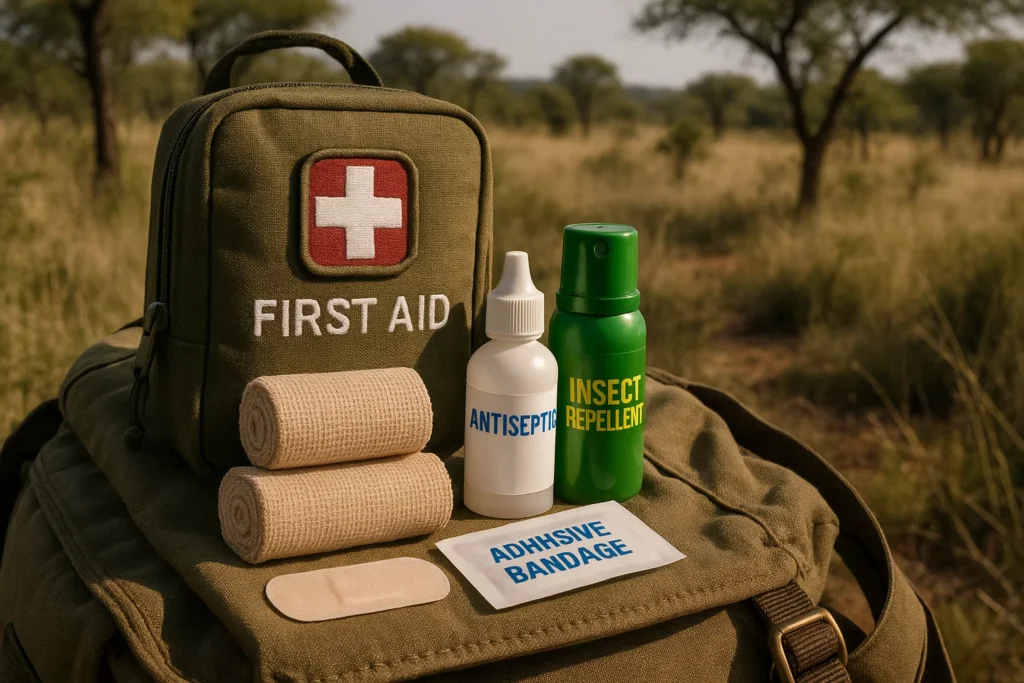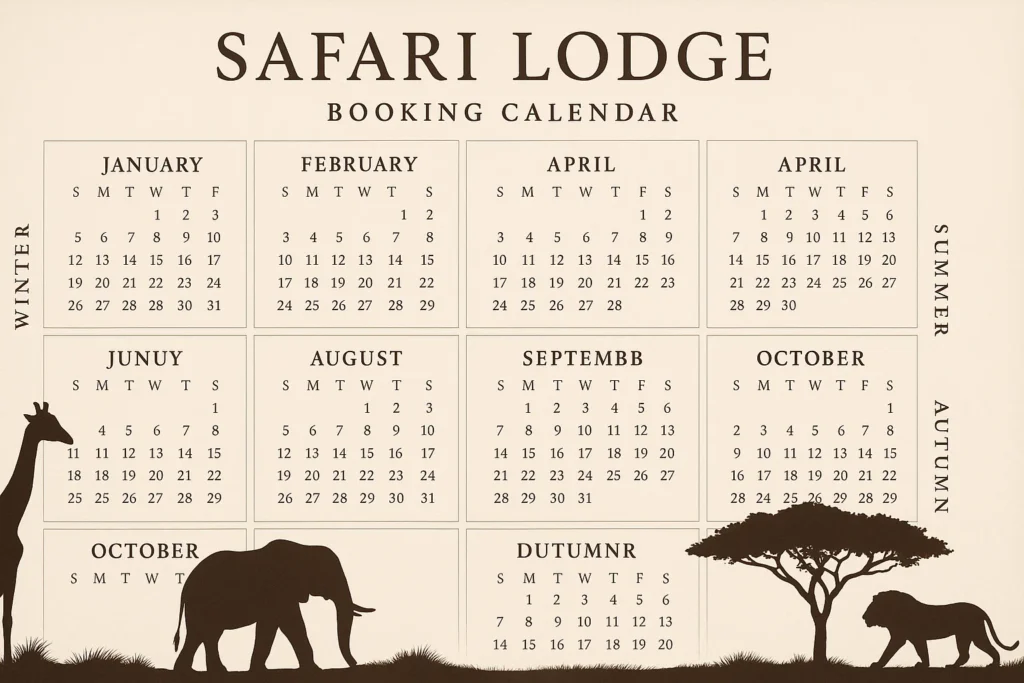Traveling on safari means venturing into remote locations, often far from immediate medical help. A well-designed first aid kit is one of your most essential pieces of gear. But “more” is not always “better”—it’s about smart selection, practical utility, and adapting to your route, health needs, and destination. In this post, we’ll help you build an efficient safari first aid kit, explain what to leave behind, and offer a checklist suited to different safari styles.
Why a safari first aid kit is different
Unlike a city trip, on safari you’ll deal with:
- Distance from hospitals or clinics
- Harsh environments (dust, heat, humidity)
- Wildlife, insect, and sun exposure
- Difficult terrain and limited luggage weight (often 15–20 kg on bush flights)
- Variable support from lodges (some have basic supplies, others minimal)
Because of this, your kit should augment local medical support—not replace it. Always consult a travel medicine specialist before departure, especially in malaria or tropical disease zones.
Principles for packing smart
Before listing items, these guiding principles help keep your kit effective:
- Compact & modular: Use small pouches or waterproof zip bags so you can carry what you need on game drives or walks without hauling the full kit.
- Prioritize by risk: Focus on items for wounds, insect bites, allergies, digestive issues, and emergencies.
- Redundancy awareness: Don’t pack two heavy items that do the same job—choose one well.
- Check expiration & labeling: Medicines degrade; carry originals with prescription labels (needed for customs).
- Accessibility: Keep your kit in your carry-on or daypack—not buried in checked bags.
Core components: the must-have essentials
Below is a categorized breakdown of what to include. Use this as a baseline and adjust per your itinerary, personal health, and destination.
Wound & trauma supplies
- Adhesive bandages (various sizes)
- Sterile gauze pads & non-stick dressings
- Roller bandage / crepe wrap
- Adhesive tape (medical tape)
- Steri-strips or butterfly closure strips
- Antiseptic wipes or solution
- Antibacterial / antibiotic ointment
- Burn gel or hydrogel dressings
- Tweezers & small scissors
- Safety pins
- Elastic band / cold compress packs
Illness, digestive & systemic care
- Pain relievers / anti-inflammatories (ibuprofen, paracetamol)
- Antihistamines
- Anti-diarrheal (e.g. loperamide)
- Oral rehydration salts (ORS) or electrolyte tablets
- Antacids / indigestion relief
- Anti-nausea / motion sickness tablets
- Antimalarial medication (if required)
- Broad-spectrum antibiotic (with physician guidance)
- Sterile eyewash / saline
Environmental & preventive items
- Insect repellent (DEET or equivalent)
- Sunscreen (SPF 30+)
- Lip balm with SPF
- Mosquito bite relief / calamine lotion
- Antihistamine or corticosteroid cream
- Thermometer (digital)
- Face masks
- Emergency blanket / thermal foil sheet
Emergency & specialized tools
- Epinephrine auto-injector (for severe allergies)
- Travel CPR mask
- Rapid test kits (e.g. malaria, COVID)
- Emergency whistle
- Tick remover
- Splint material (e.g. finger splint)
- Duct tape or medical tape roll
- Signal mirror
Personal & prescription medications
- All personal medications (in original labeled bottles)
- Copies of prescriptions
- Extra supply in case of delays
- Travel insurance and emergency contact info
What to skip (or minimize)
- Large or bulky specialty equipment
- Excessive duplicates of similar items
- Heavy liquid bottles—prefer tablets or powders
- Outdated or seldom-used medications
- Nonessential over-the-counter remedies
Tailored checklists: customizing per safari type
| Safari type | Additional risks | Additions to Core Kit |
|---|---|---|
| Lodge & game drives | Moderate remoteness | Small kit only; leave bulky parts at base camp |
| Walking or bush safari | Minor injuries, insects | Waterproof pouches; more ORS, antiseptics |
| Fly-in / mobile camps | Resource constraints | Extra meds; backups for 1–2 days |
Example mini checklist for a walking safari:
- Adhesive bandages
- Sterile gauze & tape
- Antiseptic wipes + ointment
- Pain reliever
- Antihistamine
- ORS sachets
- Insect repellent
- Sunscreen / lip balm
- Thermometer
- Personal meds
- Emergency whistle / mirror
- Tweezers, scissors
- Eyewash
- Epinephrine (if needed)
Tips for maintaining & using your kit
- Inspect before departure: Check expiry dates, seals, and completeness
- Repackage: Use zip bags, pill organizers, or hard cases
- Label clearly: With names, dosages, and uses
- Learn basic first aid: Know how to use your supplies
- Use in stages: Stabilize in the field, then seek help
- Inform your guide: Let them know what you carry
- Log usage: Restock items used during the trip
Final thoughts
A well-chosen, compact first aid kit is your safety net in the wild. Tailor it to your health needs, travel style, and destination. It’s not about packing every possible item—but making sure the few you carry are useful, accessible, and well maintained. With the right kit in your daypack, you can explore with confidence and peace of mind.
FAQs
Yes, with medical advice. Carry them in labeled containers and only what you need.
Only in high-risk areas. Most experts recommend professional treatment over generic kits.
Some do, but availability and quality vary. Carry your personal essentials.
Keep your kit around 300–500 g for day use. Leave heavier backups at your base camp.
Check before every trip. Replace expired, damaged, or used items.






